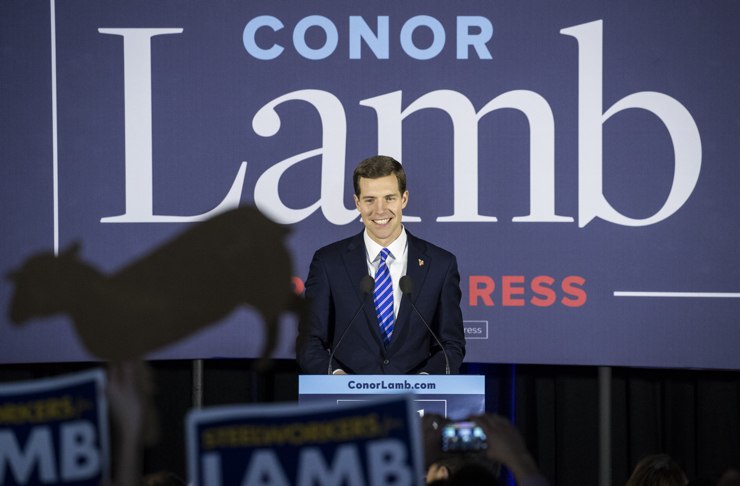The special election for Pennsylvania’s 18th Congressional District has ended in a photo finish. There are absentee ballots still to be counted, perhaps a recount to be demanded. But it looks as if the Democrat, Conor Lamb, has won in this district that just two years ago voted for Donald Trump over Hillary Clinton by a 20-point margin. Even if the Republican, Rick Saccone, pulls ahead as the final count comes in, Tuesday’s result portends extinction for the GOP majority in Congress.
But that was a safe bet even before this debacle. The better question is not whether Republicans have a prayer of hanging on to the House of Representatives, but what kind of Republican Party might eventually emerge from the wreckage to win again. The party is experiencing a fit of creative destruction, half-born, half-dying, grasping for redefinition.
Donald Trump started to redefine the party in 2016 — as one that could win Rust Belt states like Pennsylvania for the first time since Ronald Reagan. He viscerally appealed to economic nationalism; to voters’ disgust with the wars that other Republicans started but couldn’t win; and to fears that protests against police would unleash a new wave of violence across the land. He tied immigration to both jobs and crime. Just as important, however, he eschewed the smug triumphalism of Mitt Romney’s rhetoric about ‘makers’ and ‘takers.’ Trump recognized that the voters Romney characterized as the ’47 percent’ who paid no income taxes were largely the same as the ones Barack Obama had described in 2008, when he said at a San Francisco fundraiser:
You go into these small towns in Pennsylvania and, like a lot of small towns in the Midwest, the jobs have been gone now for 25 years and nothing’s replaced them. And they fell through the Clinton administration, and the Bush administration, and each successive administration has said that somehow these communities are gonna regenerate and they have not.
And it’s not surprising then they get bitter, they cling to guns or religion or antipathy toward people who aren’t like them or anti-immigrant sentiment or anti-trade sentiment as a way to explain their frustrations.
Trump’s ticket to the White House was punched by those ‘bitter clingers’ — or ‘deplorables,’ as they came to be called after an ill-chosen remark by Hillary Clinton — and the culturally conservative 47 percenters. Trump rebuilt the coalition that had re-elected Richard Nixon by a 49-state landslide in 1972. By 2016 it had shrunk, but it remained a majority of voters in a majority of states.
Pennsylvania could have been the symbol of the Republican Party’s future. But what happened in the 18th Congressional District shows that the GOP has missed its chance, at least for now. Saccone embraced Trump, and Trump has recently embraced tariffs, but then, so has Conor Lamb, who is the kind of Democrat who appeals to the voters Trump won in 2016. Lamb now, like Trump then, presents himself as pro-industry and relatively socially moderate. Saccone, by contrast, was almost as polarizing a Christian culture-warrior as Roy Moore, the hardline social conservative (with a history of dating teenagers) who lost a Senate seat in Alabama to a Democrat.
The Republicans have learned neither the economic nor the cultural lessons of the 2016 Trump campaign—the supreme lesson being that America First, the working man, and anti-leftism are winning themes, while politics as religion (or religion as politics) and the economics of Gordon Gekko are losers. The Trump administration’s foreign-policy reshuffle, set to install a more hawkish secretary of state and a CIA director with a history of involvement in torture, may suggest a drift back to the perpetual war mindset of the Bush administration as well. (Saccone, as it happens, had been a civilian contractor at Abu Ghraib.)
A half-Trump, half-Bush Republican Party has no future. But what’s next? The impending wipeout of the House GOP come November will create a vacuum. Now is the time for all Republican factions — Trump, NeverTrump, libertarian, religious right, and more — to start thinking about what has gone wrong and what, or who, has to change to set the party right.


















